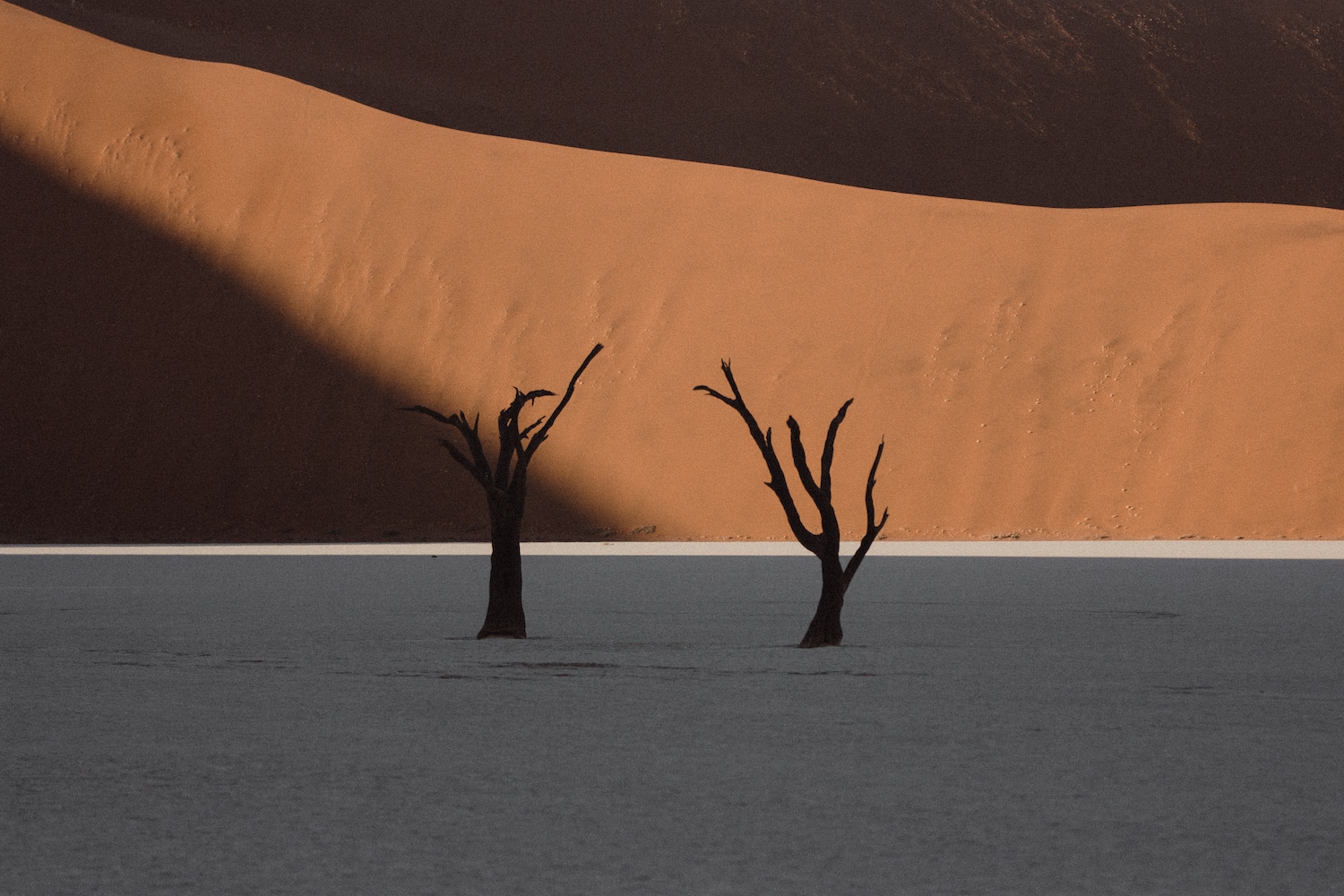Are you contemplating what to visit in Namibia for a week? Or are you looking for a unique and off-the-grid travel experience in Namibia? Look no further. This captivating African country boasts a wealth of stunning attractions that will leave you in awe. From vast deserts to rugged coastlines, Namibia is a playground for adventure seekers and nature enthusiasts alike.
Namibia has been on my to-visit list for the longest time. So here’s my ultimate travel guide unveiling my top 10 tourist attractions in Namibia.
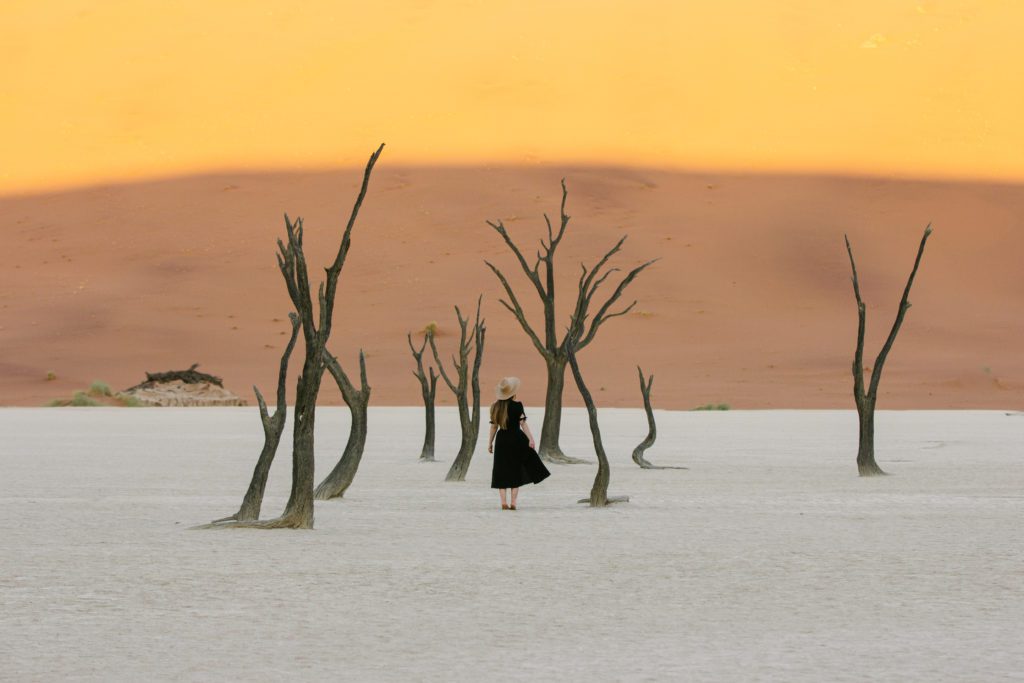
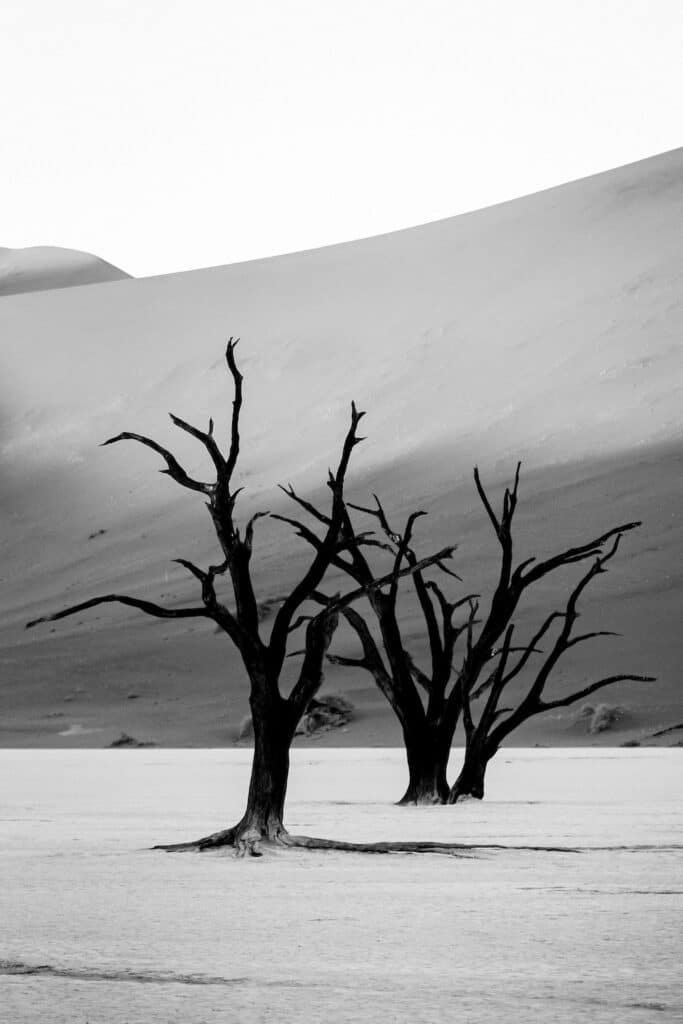
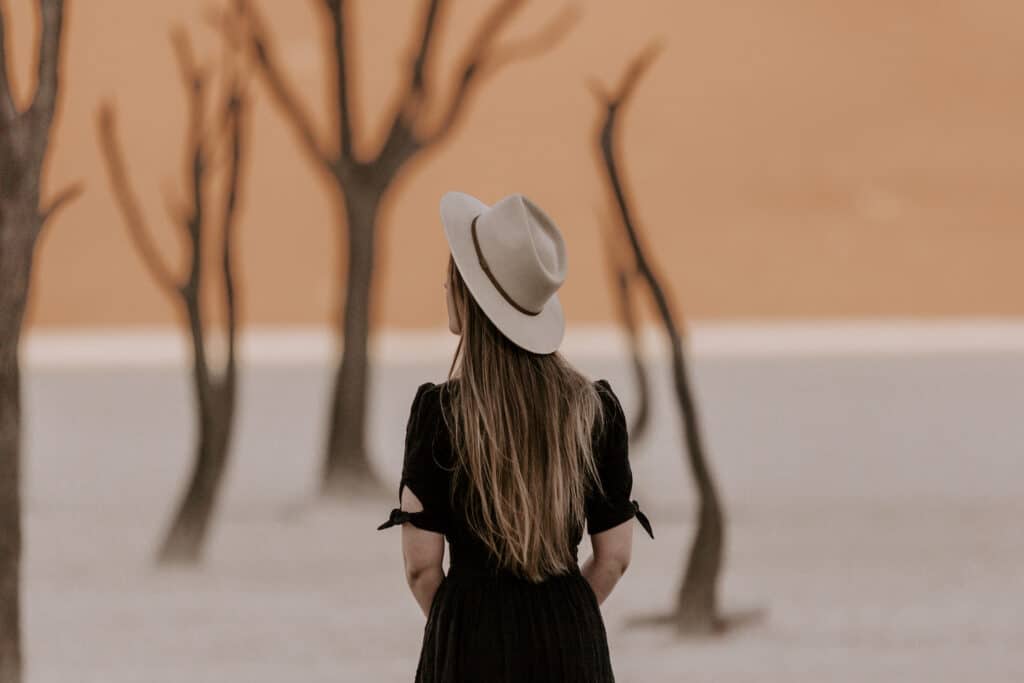
Why visit Namibia?
Namibia is a country that offers a unique blend of natural wonders and cultural experiences. It is a land of contrasting landscapes, where you can witness the stark beauty of the Namib Desert and the lushness of the Caprivi Strip. Whether you are a wildlife enthusiast, an adrenaline junkie, or someone seeking a peaceful retreat, there are enough unique places to visit in Namibia, trust me!
What to visit in Namibia for a week?
Let’s start with the otherworldly beauty of the Namib Desert, where towering dunes stretch for miles and the ethereal landscapes create a photographer’s dream. Not to mention the ancient landscapes of Damaraland and discover the intriguing rock formations and ancient petroglyphs that dot the region.
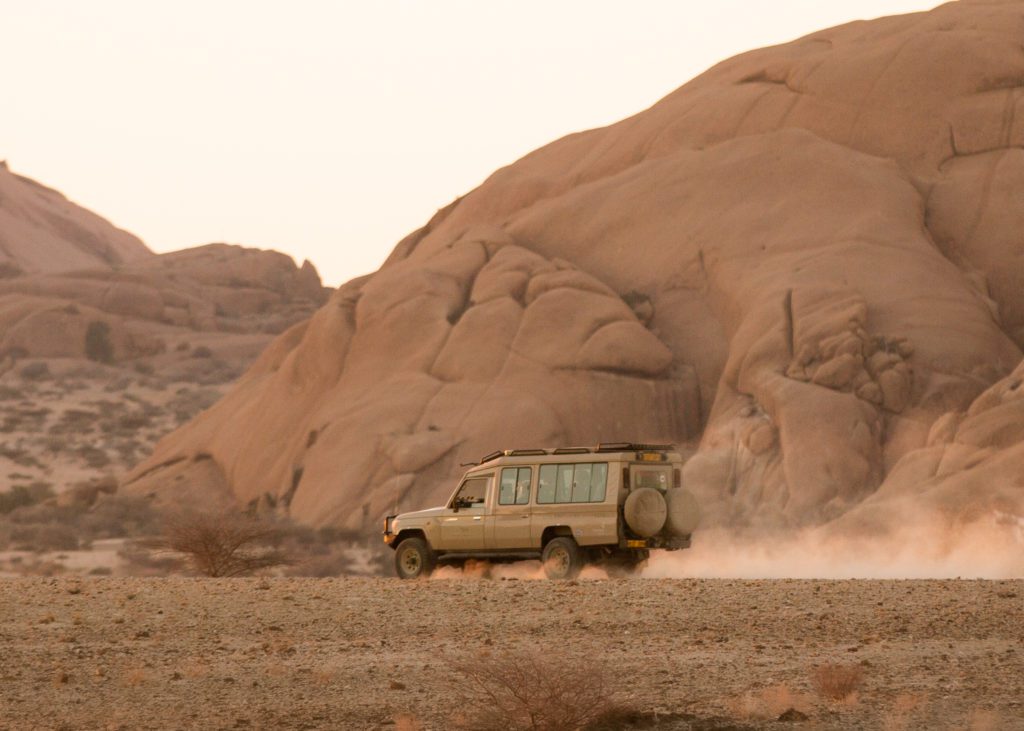
For wildlife enthusiasts, Etosha National Park offers unrivaled opportunities to spot the “Big Five” and witness the awe-inspiring spectacle of animals congregating around the waterholes.
Swakopmund, a charming coastal town, offers a unique blend of adventure and relaxation, with activities ranging from sandboarding down towering dunes to enjoying fresh seafood by the sea. Spitzkoppe is about 2 hours away from Swakopmund.
If you like dramatic landscapes, you’re in for a treat. The Spitzkoppe mountain range as often referred to as ‘The Matterhorn of Namibia’, exists of 120 million years old granite peaks.
Let’s dive deeper into what to visit in Namibia!
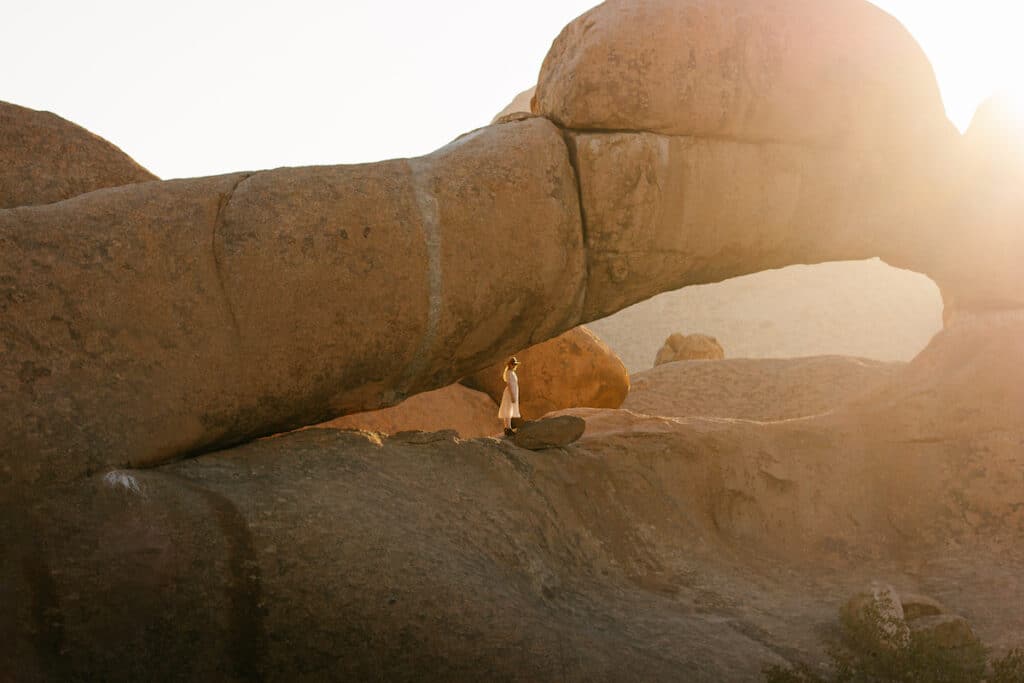
Namibia’s Top Natural Attractions
Namibia is famed for its breathtaking natural wonders, and several must-visit attractions should be on every traveler’s list. One of the most iconic sights in Namibia is the Namib Desert, known for its towering dunes and otherworldly landscapes.
Sossusvlei, a salt and clay pan surrounded by red dunes, is a photographer’s dream and a must-visit location.
RELATED READ I My 10-day Photography Guide to Namibia
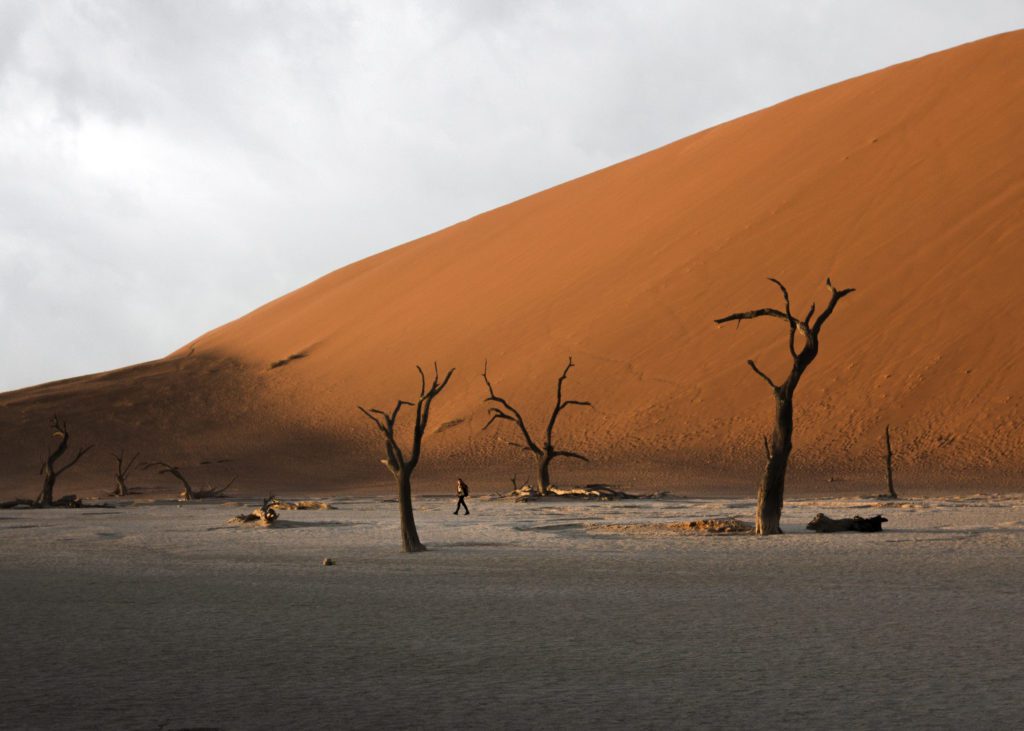
Another natural wonder worth exploring is the Fish River Canyon, one of the largest canyons in the world. The canyon offers stunning views and hiking opportunities for those seeking an adventure. The Skeleton Coast, with its rugged coastline and shipwrecks, is another unique attraction that showcases the raw beauty of Namibia’s landscape.
Exploring Namibia’s National Parks
In the heart of Namibia, the national parks are like different chapters of an epic tale, each with its own cast of wild characters. In Etosha National Park, the vast salt pan sets the stage for a daily drama as the “Big Five” converge around the waterholes—a spectacle that’s as humbling as it is thrilling.
Venturing into the Namib-Naukluft National Park, you’re greeted by the stark beauty of the Namib Desert, juxtaposed with the Naukluft Mountains. It’s a place where every step on a hike reveals the resilient heart of the desert, and the silence speaks volumes.
Then there’s Bwabwata National Park in the lush Zambezi Region, where the presence of elephants and buffalo reminds you of the wild pulse of this land. Each park is a world unto itself, inviting you to not just observe but to connect with the soul of Namibia’s wilderness.
The Best Private Game Reserve in Namibia
Erindi Private Game Reserve is not a national park, but it is one of the largest private game reserves in Namibia. It offers a significant tract of pristine wilderness and is known for its conservation efforts and diverse wildlife. It’s a key destination for wildlife enthusiasts and those looking to experience the natural beauty of Namibia within a managed reserve setting.
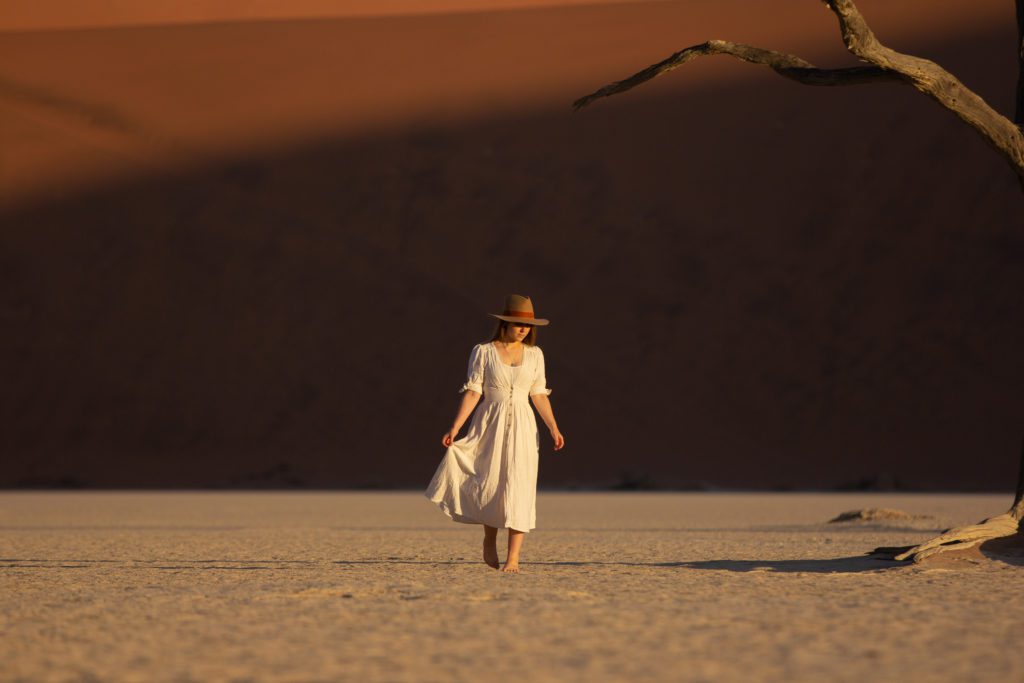
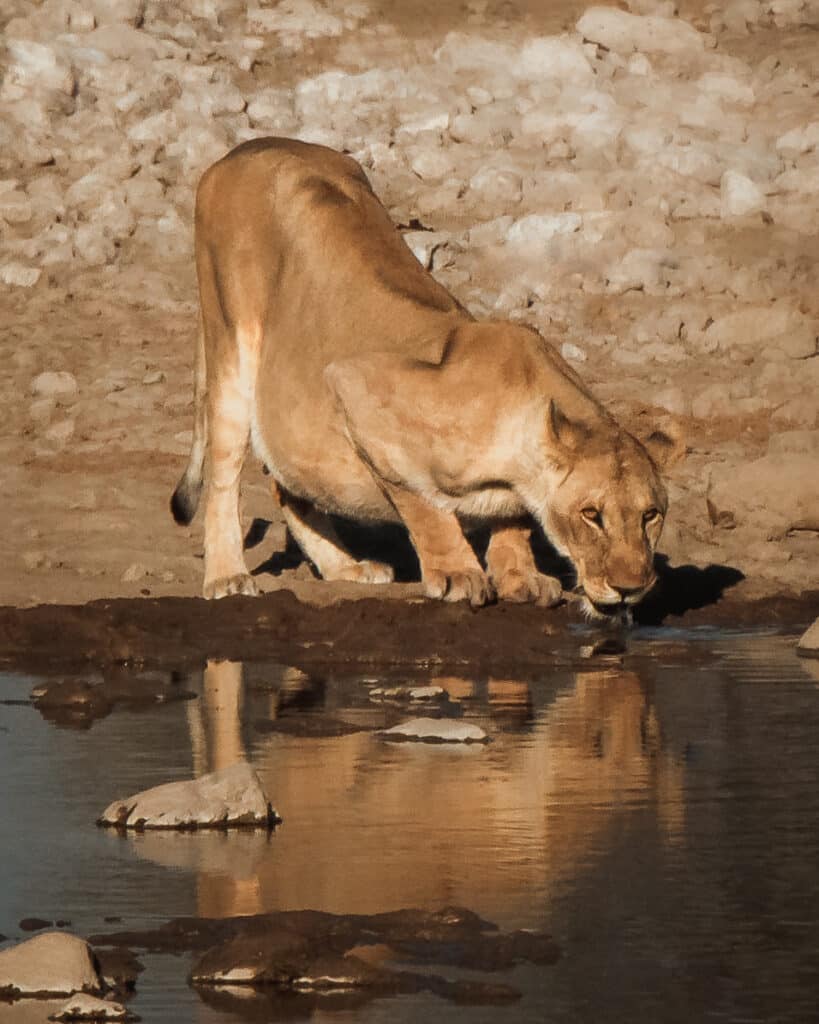
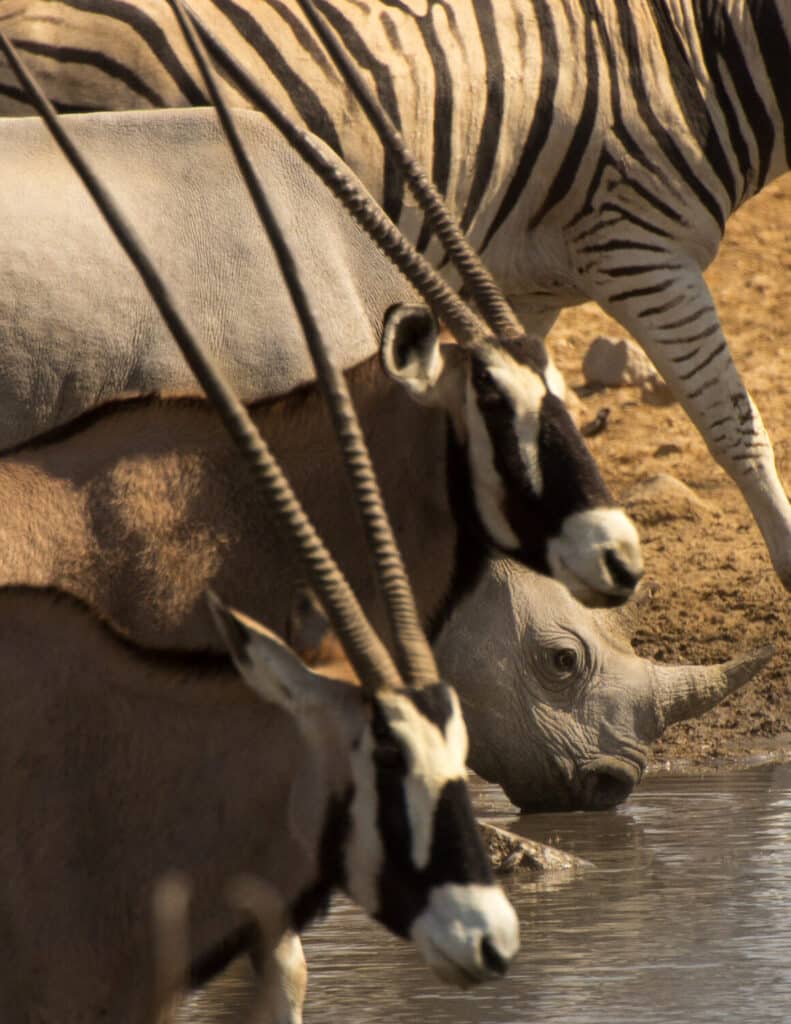
Namibia’s Cultural and Historical Sites
Namibia whispers tales of ancient times and cultures through its landscapes and people. In Damaraland, the land itself bears marks of history, with rock formations and petroglyphs etching the stories of millennia onto the canvas of the earth.
Among these, the Twyfelfontein rock engravings stand as a testament to the land’s ancient inhabitants, a UNESCO World Heritage Site that beckons with tales of a time long passed yet vividly alive in every line carved into stone. It contains over 2,000 rock art paintings that are believed to be between 5,000 and 10,000 years old.
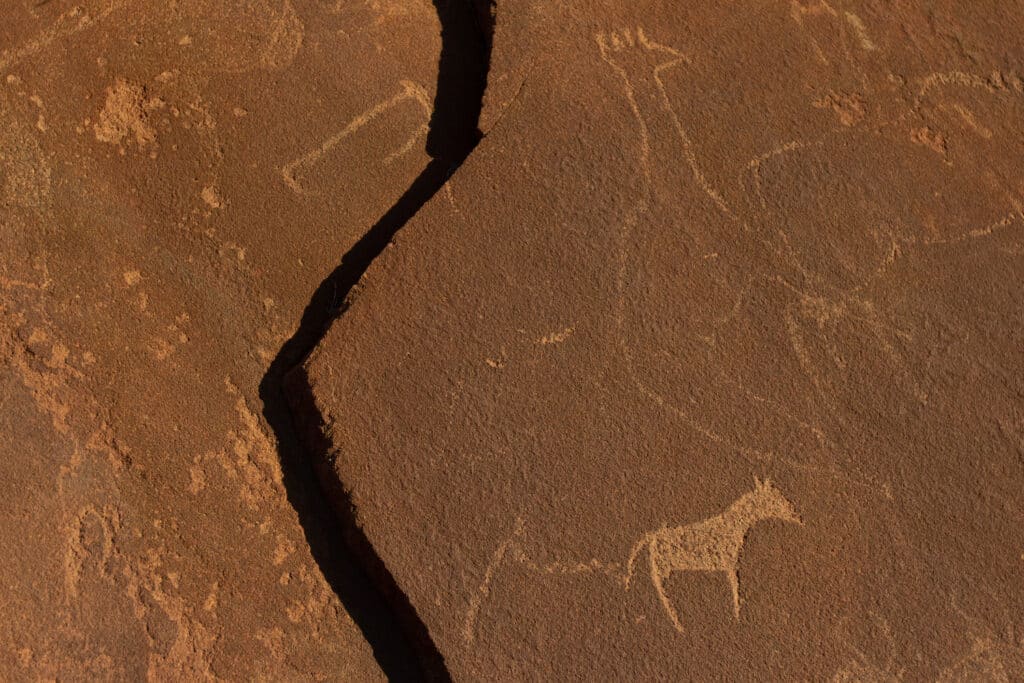
Venturing into the heart of Namibia, the Himba villages offer a living connection to the country’s cultural heritage. The tribe, with its unique traditions and striking presence, invites you into a world where customs and craftsmanship bridge the past and present.
A visit here isn’t just about observing; it’s about engaging, learning, and understanding the rhythms of life that pulse through the veins of Namibia’s communities. It’s here, among the pottery and jewelry, that the spirit of Namibia truly comes to life, offering a glimpse into the soul of this fascinating land.
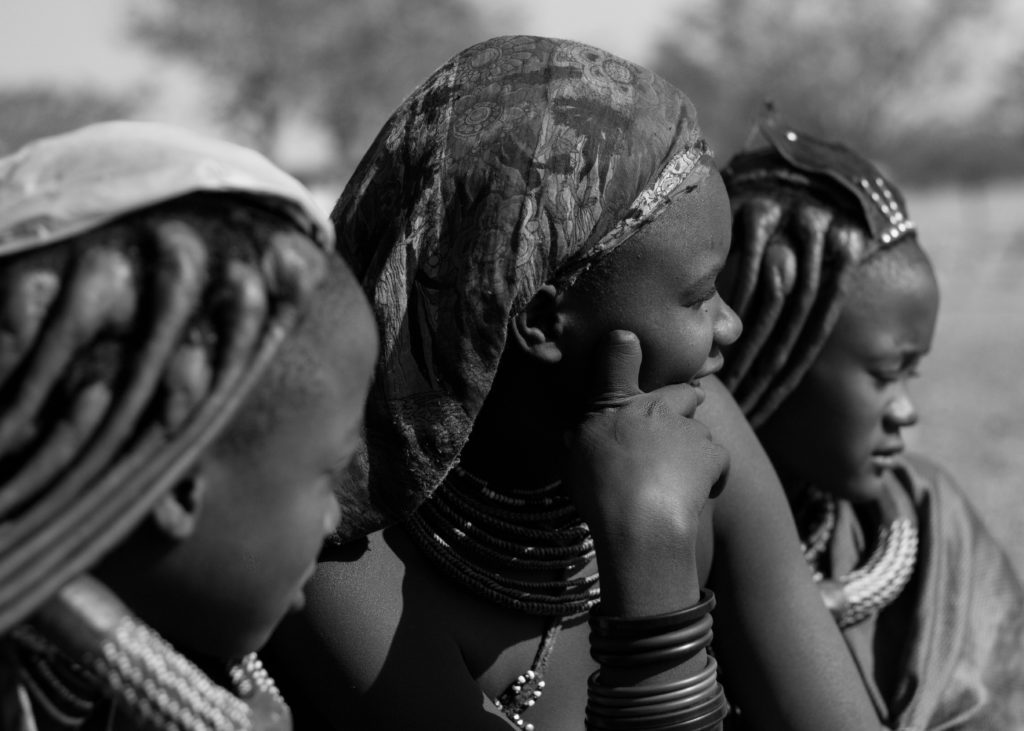
Namibia’s Unique Wildlife Encounters
Namibia has always felt like a secret garden of sorts to me, a place where the wild things roam free and the heart of an adventurer finds its rhythm. It’s not just the ‘Big Five’ that beckon, though their presence is undeniably thrilling. It’s the cheetahs, with their unmatched speed, the graceful giraffes and playful zebras, and the chorus of birds that fill the air with song. This land is a mosaic of life, each creature adding its own color to the vibrant tableau of the wilderness.
Among the treasures of Namibia, the Waterberg Plateau Park stands out, a sanctuary where birds flit among the trees, rhinos tread ancient paths, and antelopes leap through the grasses. Then there’s Cape Cross, where the air is filled with the sounds of one of the world’s largest colonies of Cape fur seals. It’s a spectacle that feels both wild and intimate, a privilege afforded by Namibia’s steadfast commitment to conservation.
To me, Namibia isn’t just a place to see wildlife; it’s a reminder of the world as it once was, wild and wondrous. Every visit feels like a step into the heart of nature itself, a journey into the soul of the wild.
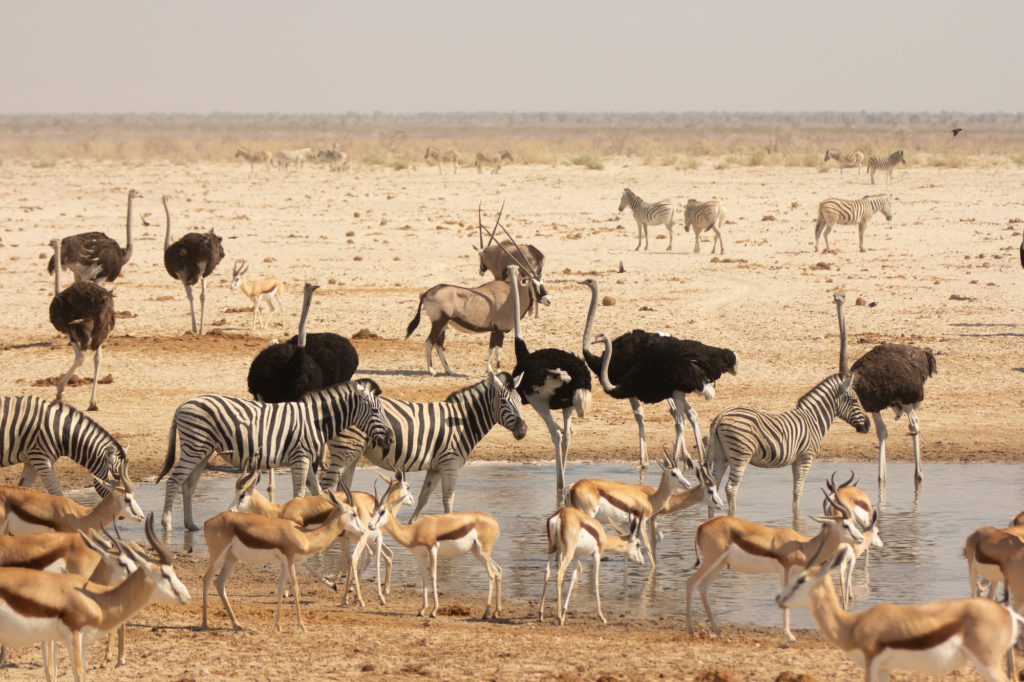
Adventure activities in Namibia
For adventure seekers, Namibia offers a wide range of thrilling activities that will get your adrenaline pumping. The towering sand dunes of Sossusvlei provide the perfect backdrop for sandboarding, an exhilarating experience that allows you to slide down the slopes of the dunes. One such dune is Dune 45, also known as Big Daddy, in the Namib-Naukluft National Park. This massive dune is more than 400 meters high and offers breathtaking views from the top.
If you’re looking for an even bigger challenge, try your hand at climbing Dune 700. This imposing dune is located in the Sossusvlei area of the Namib Desert and towering 730 meters high, it’s said to be the tallest freestanding sand dune in the world.
When it comes to aerial views, there’s nothing quite like a balloon or helicopter flight. And in Namibia, you’ll have plenty of opportunities to take to the skies.
One of the best places for a balloon flight is in the Namib Desert. You can also get some great views of wildlife from up above, including elephants, lions, and giraffes. If you’re looking for even more adventure, you can try a helicopter flight. Several companies offer flights over Namibia’s scenic landscapes. You can even combine a helicopter tour with a safari, so you can see the wildlife up close and personal.
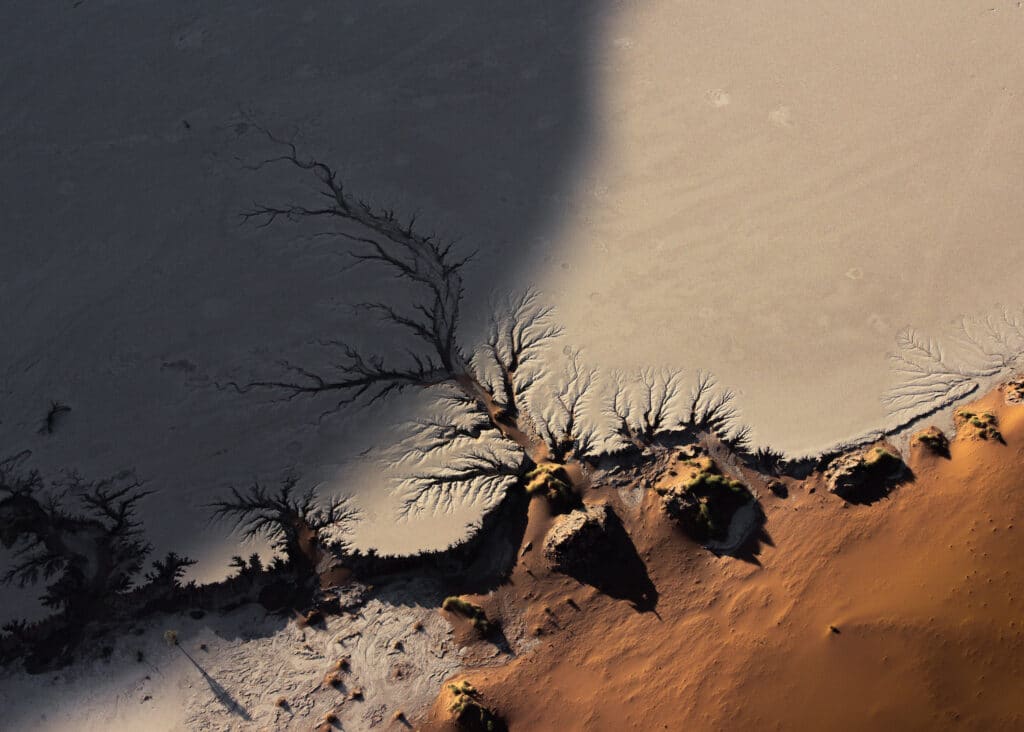
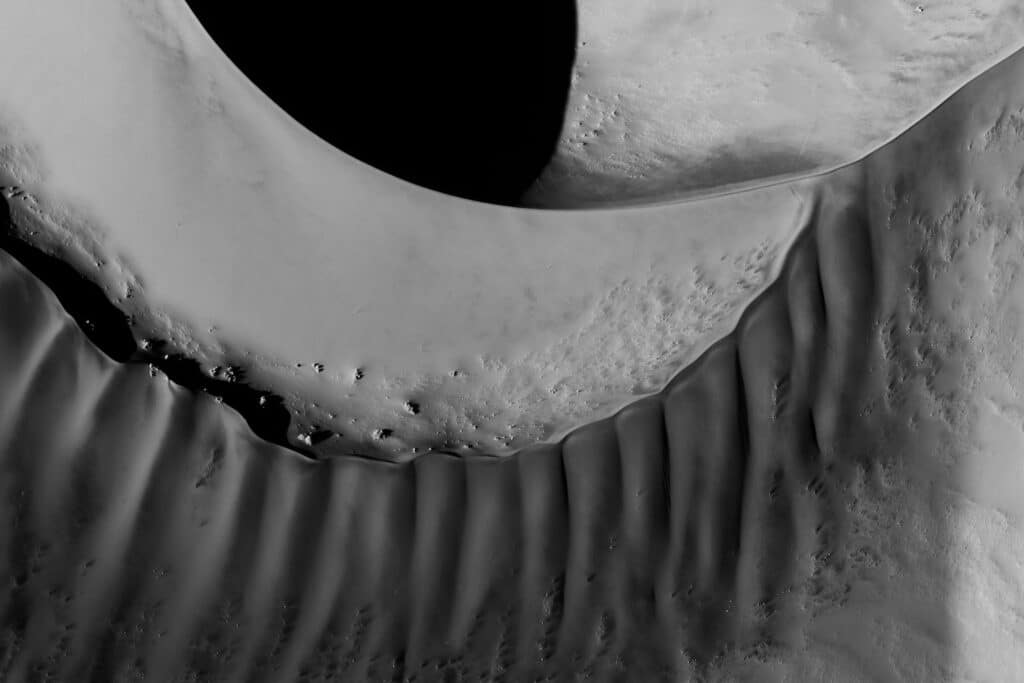
If you’re looking for a different kind of adventure, head to Swakopmund, a charming coastal town. Here, you can try your hand at skydiving, dune buggy rides, or even take a scenic flight over the Skeleton Coast. For those who prefer a more relaxed pace, Swakopmund also offers opportunities for fishing, dolphin cruises, and enjoying fresh seafood by the sea.
Extra Things in Namibia
Viral Apple Pie in Nambia: Solitaire is a tiny settlement found in the Khomas Region of central Namibia. It’s also the only place you can fuel your car and grab a bite to eat. I highly recommend trying the deliciously warm apple pie with ice cream in the Solitaire Bakery. It is rated as being the country’s best apple pie! After trying one myself, I completely understand why there is a waiting line outside the door.
Stargazing in Namibia: There’s something magical about looking up at the stars. It’s a reminder that we are part of something much bigger than ourselves. And in Namibia, where the night sky is free of light pollution, stargazing is an experience not to be missed. I remember being awestruck during my first night in one of the remote areas. This ancient granite outcrop of Spitzkoppe is one of the most popular stargazing spots in Namibia. The lack of vegetation and elevation make it the perfect place to take in the Milky Way.
Best time to visit Namibia: Dry or Rainy season?
Namibia’s climate varies throughout the country, so the best time to visit depends on the activities you plan to undertake and the areas you wish to explore.
The dry season: which runs from May to October, is generally considered the best time to visit, as wildlife is more easily spotted around water sources. This period also offers more pleasant temperatures for outdoor activities.
The wet season: which runs from November to April, is the ideal time to visit, as migratory birds flock to the country. However, it’s worth noting that some areas may be inaccessible during this time due to heavy rainfall. It’s always a good idea to check weather conditions and road accessibility before planning your trip.
Namibia Tourist Visa Requirements
To travel to Namibia, you will need a valid passport and a visa, which can be obtained from the Namibian government website in your home country. You’ll need to provide your personal information, travel plans, and passport information.
Once your application is processed, you will receive a confirmation email with your visa attached. You can then print out the visa and bring it with you when you travel. It is important to note that your visa will only be valid for 90 days from the date of issuance, so be sure to apply for your visa well in advance of your trip.
How to Get Around in Namibia?
The most convenient way is by car. You can either rent a car (preferably a 4×4) or use your own. This way, you can go at your own pace and stop whenever and wherever you want. Be sure to bring a good map (or GPS) and plan your route before setting off. Spare tires and a good travel insurance are a must when driving off-road.
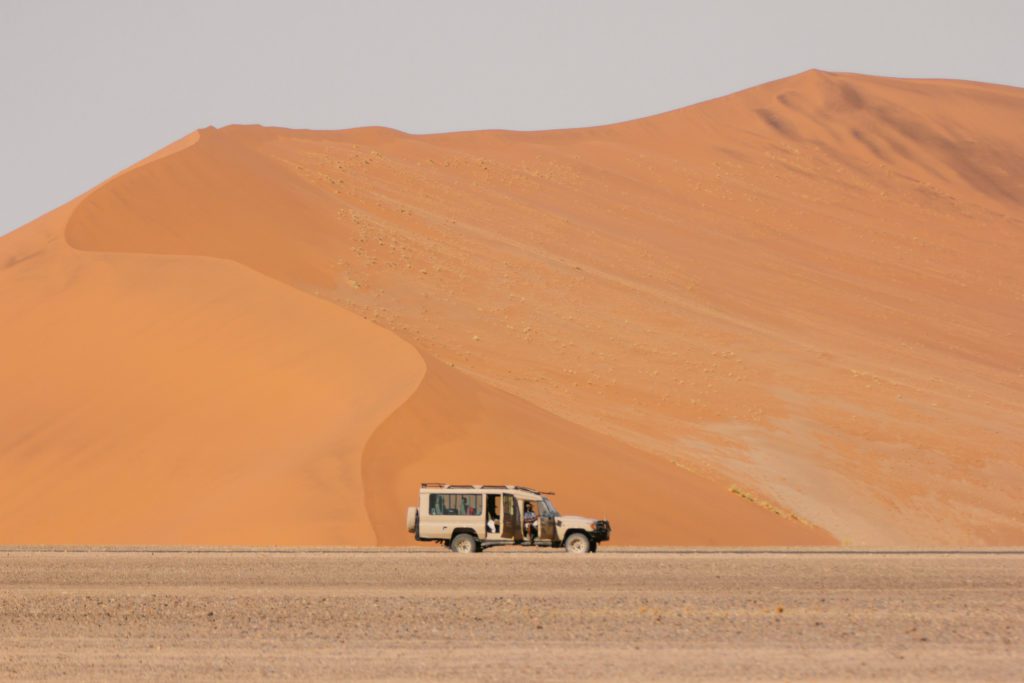
Travel Tips for visiting Namibia
Firstly, make sure to pack appropriate clothing and gear for the activities and weather conditions you anticipate. Also, respect the local culture and wildlife by practicing responsible tourism and following any guidelines or restrictions in place.
It’s also advisable to book accommodations and activities in advance, particularly during peak travel seasons, to secure your preferred options. Namibia is a vast country with long distances between attractions, so planning your itinerary and allowing ample time for travel is crucial.
Most Spectacular Hotels in Namibia:
Desert Quiver Camp: This gem caters to adventurers and families alike. It’s located near the entrance to the Namib-Naukluft National Park and the famous dunes of Sossusvlei. So if you want to explore the dunes all by yourself in the morning, this is the spot where you want to stay overnight. I loved every single minute of this remote stay (including wild animal noises at night!).
BOOK HERE | Desert Quiver Camp
Spitzkoppen Lodge: This exclusive lodge is situated in the shadow of the Spitzkoppe Mountains, often referred to as the “Matterhorn of Namibia,” known for its striking granite peaks that rise dramatically from the desert floor. Waking up here was a dream to say at least!
BOOK HERE | Spitzkoppen Lodge
Zannier Hotels Sonop: Constructed on top of boulders, Sonop provides an unparalleled blend of 1920s British colonial elegance and the thrill of an African adventure. The camp is situated in the southern part of Namibia, offering breathtaking panoramic views of the stunning desert landscapes that stretch as far as the eye can see. This one is a 5-star luxurious spurge that will leave you breathless.
BOOK HERE | Zannier Hotels Sonop
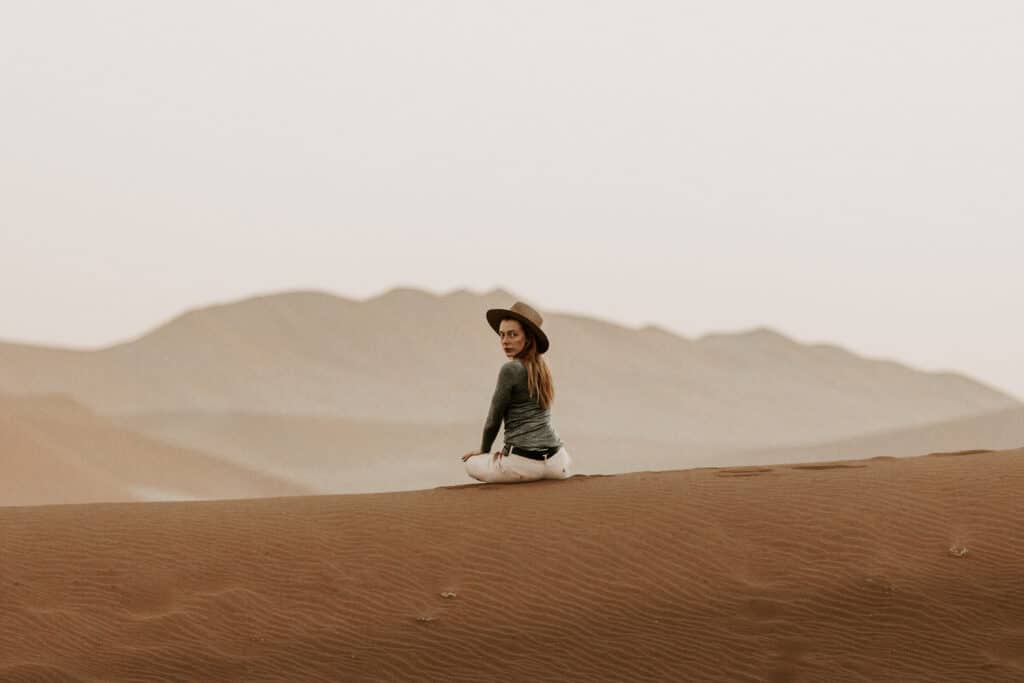
Is Namibia safe for Female Tourists?
Namibia is generally considered safe to travel for female tourists, especially when compared to other countries. It is known for its political stability, welcoming locals, and well-established tourism infrastructure. However, like traveling in any country, it’s important to take standard safety precautions to ensure a smooth and safe experience. Here are my top 5 safety tips for female travelers (or any travelers) in Namibia:
- Use Reputable Transportation: Use reputable transportation services, especially when traveling long distances or to remote areas. If renting a car, make sure it’s from a reputable company, and always keep the doors locked while driving.
- Trust Your Instincts: Always trust your instincts. If something doesn’t feel right, don’t do it. Safety should always be your top priority.
- Travel in Groups: If possible, travel with a companion or in a group, especially when exploring less populated or remote areas. There’s safety in numbers, and it can also enhance your travel experience.
- Respect Local Customs: Namibia is a culturally diverse country. Respecting local customs and dressing modestly, especially in rural areas, can help avoid unwanted attention.
- Health Precautions: Ensure you have all necessary vaccinations and health precautions in place, especially for areas with malaria risk. Carry a basic first aid kit and enough of any prescribed medications.
What to Pack for Your Namibian Trip?
Assuming you already know what to visit in Namibia and you chose to do safari, there are a few key items you’ll need to pack:
Binoculars: You’ll want to be able to see the animals up close, without disturbing them.
Camera: Make sure to bring a good camera, so you can capture the beauty of the landscapes and wildlife. If you shoot with a DSLR, I recommend packing a wide-angle lens and your telelens.
Sunscreen and hats: The sun is strong in Namibia, so make sure to pack sunscreen and hats to protect yourself from sunburn. Chapped lips are your worse nightmare in a desert, so definitely load up on chapstick.
Comfortable walking shoes: You’ll be doing a lot of walking on your safari, so comfortable shoes are a must. Keep in mind not to bring along any shoes that are too precious to you. The red sand will stain them!
Proper clothing & layers: While you don’t need to dress formally, it’s important to pack clothes that will protect you from the sun and the elements. Long sleeves and pants are advisable, as well as a hat or scarf to cover your head. Even in June, I wore a winter jacket, scarf, gloves, and a hat in the mornings. The temperature can reach the freezing point at night.
If you like the article, you will appreciate My 10 day Photography Guide to Namibia
FAQ’s on what to visit in Namibia
Afrikaans is spoken by around 60% of Namibia’s population. It is the second most common language after English. It is a Germanic language that was brought to Namibia by Dutch settlers. Being raised in the Dutch-speaking part of Belgium (Flanders), I could easily understand Afrikaans, which made my trip extra fun.
Given the vastness of the country and the diversity of landscapes and activities it offers, a trip of at least 10 to 14 days is recommended to experience a broad spectrum of what Namibia has to offer without feeling too rushed.
For areas like the Namib Desert, Sossusvlei, Swakopmund, and the coastal regions, the risk of malaria is generally considered low to none. Similarly, Windhoek and much of the southern part of the country have a low risk of malaria. Malaria risk is primarily in the northern part of Namibia, including but not limited to the Zambezi Region (formerly known as the Caprivi Strip), the Kunene Region, and parts of the Otjozondjupa and Omaheke regions near the borders with Angola, Zambia, and Botswana.
Conclusion
As my own chapter in Namibia comes to an end, I’m left in awe of its vast, soul-stirring landscapes. The towering dunes of the Namib Desert and the heartfelt songs of the Himba people are etched in my memory, a narrative of the earth’s raw beauty and human connection.
This is a land where each encounter, each dusty path and sunset silhouette, becomes a part of you. So as you ponder your next travel destination, consider Namibia’s hidden gems, and prepare for an experience that will captivate and transform you.
For the traveler seeking more than sights, Namibia offers a journey into the essence of discovery itself. If you’re wondering what to visit in Namibia, let me tell you, it’s more than just a checklist; it’s a call to adventure that resonates deep within.
